NIGHTMARE COSTS
As more PFAS contamination is uncovered in states across the country, the costs to protect communities from these extremely persistent chemicals are skyrocketing.
States and taxpayers didn’t cause the contamination, but they are largely shouldering the burden of testing and monitoring, delivering clean water to communities, cleaning up contaminated sites, and covering health care costs.
How much more will it cost taxpayers to fix this mess is anyone’s guess. But it’s easy to estimate costs in the billions of dollars given just a fraction of the money that’s been spent to fix this nightmare. Of course, for people with health problems associated with exposure to PFAS, and their families, the costs are unquantifiable.
Below is a partial accounting of taxpayer dollars spent or planned to be spent on PFAS contamination. These costs are just the tip of the iceberg – hidden and future costs still loom.
Total spent to date (as of 1/30/2025):
$0
State:
Total Spent: $

FEDERAL GOVERNMENT
- The National Defense Authorization Act (NDAA) of 2017 authorized $7 million to conduct a health study near eight military bases contaminated with PFAS. 1
- The 2018 NDAA contains $10 million for the second year of the first-ever nationwide PFAS health impact study, which was established in the FY 2018 NDAA, and inclusion of bipartisan legislation to create a national database for service members and veterans experiencing health problems potentially due to exposure to PFAS chemicals. It also includes $85 million for clean-up, appropriated to the Air Force and Navy. 2
- The Department of Defense spent $200 million to study and test for PFAS contamination in drinking water from the use of PFAS-containing firefighting foam and now estimates cost of $2 billion of taxpayer dollars for clean-up of groundwater on 126 bases.
- The DOD reports expenditures of $2.55 million for drinking water sampling at 3,245 military installations. 3
- Investment in research to develop a PFAS-free firefighting foam is $2.5 million to date. 4
- The House version of fiscal 2020 National Defense Authorization Act (HR 2500) was passed in August 2019, but the Senate had not acted as of September 2019. The House version includes funding for $5 million for ATSDR to study PFAS, $5 million for the USGS to monitor PFAS contamination nationwide, $121 million dedicated to environmental remediation around military installations, as well as other policies to phase out the use of PFAS and prevent chemical discharges. The bill also requires the EPA to establish safe drinking water limits for PFOA and PFOS under the Safe Drinking Water Act.
- The NDAA of 2021 authorized $1.4 billion for environmental remediation at DOD facilities. The legislation also authorizes $90 million for research that supports the development of PFAS remediation and other PFAS-related technologies, and the final package includes $15 million for a CDC study of the health implications of PFAS contamination in drinking water.
- The DOD estimates that its future PFAS investigation and cleanup costs will total more than $2.1 billion beginning in the fiscal year 2021, which is in addition to $1.1 billion in actual PFAS costs incurred through the fiscal year 2020.
- The $1.2 trillion infrastructure bill includes $10 billion towards addressing PFAS in drinking water.
- PFAS Health Study Required by Congress May Lift Threat of Superfund Suit, Inside EPA, December 19, 2017.
- Northwestern University, March 26, 2018.
- Department of Defense Aqueous Film Forming Foam Report to Congress, Appendix A, Summary by DoD Component Number of Installations and Drinking Water Systems Tested for PFOS and PFOA and Associated Sampling Costs, December 2016.
- GAO Highlights of 18-78, a report to congressional committees, October 2017, p.18.

ALABAMA
- The DOD spent $938,100 on environmental investigations at these sites: $67,700 at Birmingham International Airport, $790,700 at Maxwell Gunter AFB, and $79,700 at Montgomery Regional Airport.
- Alabama will receive $52.6 million from the federal infrastructure law to address emerging contaminants like PFAS in drinking water. We estimate at least half of this will be dedicated to addressing PFAS.
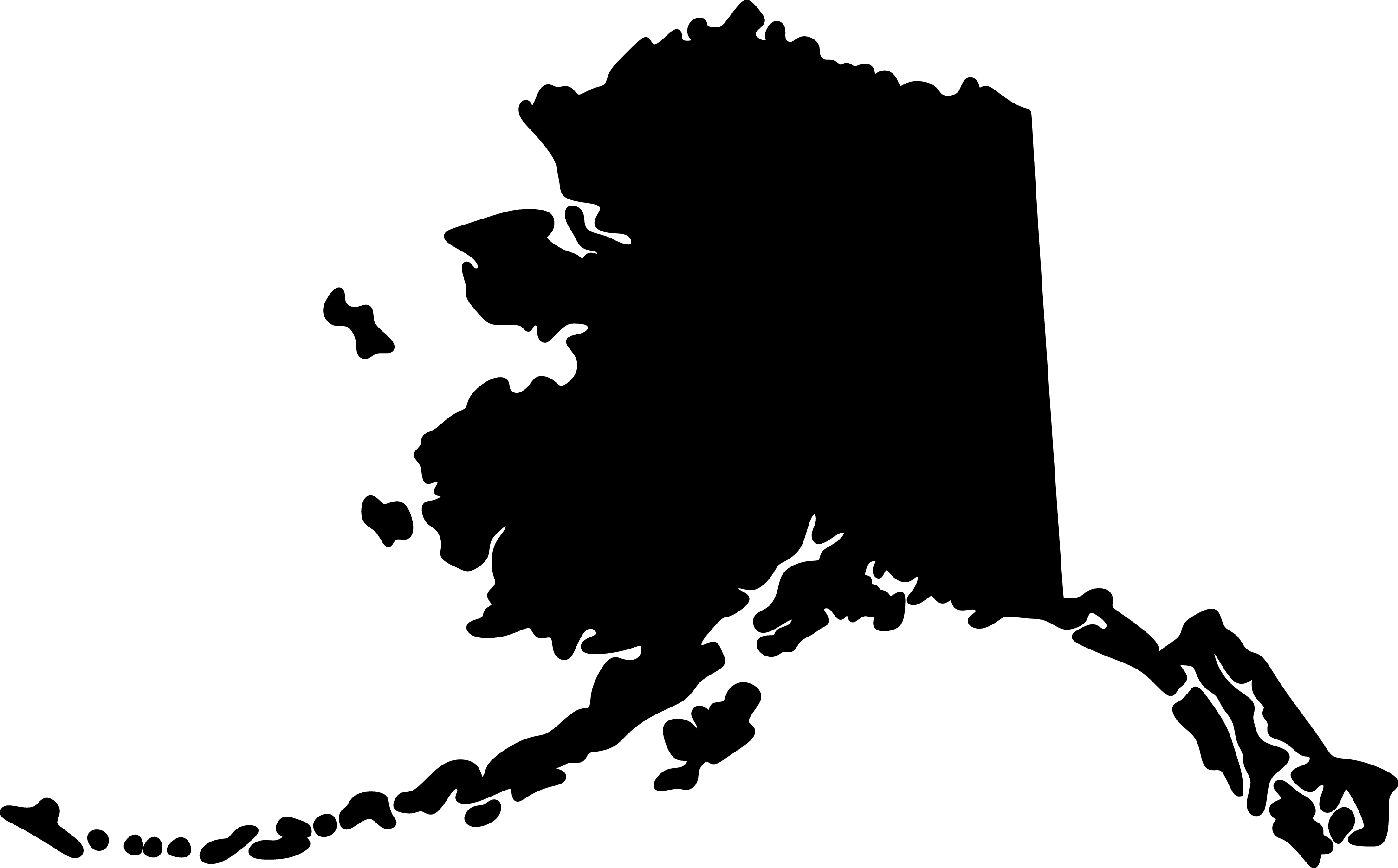
ALASKA
- The City of Fairbanks has spent $4.3 million on PFAS remediation and treatment.
- The cost of granulated active carbon (GAC) treatment for private wells and/or alternate water supply for Moose Creek, Alaska, is estimated at $3.5 million.
- The U.S. Air Force spent $9,654,800 at Eielson AFB, including clean-up.
- The DOD spent an additional $4,662,000 on environmental investigations at these sites: $151,000 at Barrow; $772,500 at Clear Air Force Station; $8,900 at Eareckson AFB; $1,075,000 at Galena Forward Operating Location; $1,075,000 million at Joint Base Elmendorf-Richardson; $51,800 at King Salmon; and $1,060,000 at Kulis Air National Guard Station.
- Alaska will receive nearly $19 million from the federal infrastructure law to address emerging contaminants like PFAS in drinking water. We estimate at least half of this will be dedicated to addressing PFAS.

ARIZONA
- The DOD spent over $3,423,200 on environmental investigations at these sites: $318,000 at Yuma; $81,400 at Air Force Plant 44; $74,000 at Air Force Research Lab Mesa; $790,700 at Davis-Monthan AFB; $790,700 at Luke AFB; $91,700 at Sky Harbor International Airport; $187,700 at Tucson International Airport; and $1,089,000 at Williams AFB.
- The State Water Infrastructure Financing Authority has given Marana a $16 million loan for its PFAS cleanup.
- The Water Quality Assurance Revolving Fund gave the Arizona Department of Environmental Quality $3.3 million for its Tucson PFAS cleanup.
- Assistant Tucson City Manager stated the city has spent $39 million dealing with PFAS contamination.
- The state of Arizona will provide $2 million to help Tucson Water restart a treatment plant shut down because of severe groundwater contamination near the Tucson International Airport from firefighting foam used by the military.
- In fiscal year 2023-2024, Arizona appropriated $5 million for PFAS mitigation.
- Arizona will receive $42 million from the federal infrastructure law to address emerging contaminants like PFAS in drinking water. We estimate at least half of this will be dedicated to addressing PFAS.

ARKANSAS
- The DOD spent $2.027 million on environmental investigations at these sites: $1.073 million at Eaker AFB; $139,700 at Fort Smith Municipal Airport; and $790,700 at Little Rick AFB.
- Arkansas will receive nearly $19 million from the federal infrastructure law to address emerging contaminants like PFAS in drinking water. We estimate at least half of this will be dedicated to addressing PFAS.

CALIFORNIA
- The City of Fullerton estimates it will cost about $5 million per year to import clean water, and $10.9 million to improve treatment facilities.
- The City of Pleasanton spent $400,000 on a consultant to conduct a survey of the feasibility of treating their contaminated wells.
- The DOD spent over $16 million on environmental investigations and clean-up at these sites: $1.768 million at Mather AFB; $73,500 at Fort Ord; $120,000 at Alameda; $75,000 at China Lake; $9,000 at Port Hueneme; $353,200 at Pt Mugu; $6,000 at Treasure Island; $504,000 at Barstow; $143,000 at Tustin; $10,000 at Twentynine Palms; $790,700 at Air Force Plant 42; $814,400 at Beale AFB; $2.26 million at Castle AFB; $67,700 at Channel Islands; $667,700 at Edwards AFB; $115,700 at Fresno Air Guard; $1.795 million at George AFB; $72,500 at Los Angeles AFB; $1.365 million at March AFB; $1.144 million at McClellen AFB; $790,700 at March Air Reserve Base; $31,700 at Moffet Field; $1.467 million at Norton AFB; $60,000 at Onizuka AF Station; $74,000 at Ontario AF Station; $ 816,100 at Travis AFB; and $790,700 at Vandenburg AFB.
- The City of Commerce has spent $460,000 to import drinking water to its residents and estimates to spend $1.8 million on a new treatment system, on top of its growing bill for replacement water.
- The Santa Clarita Valley Water Agency installed a new $6 million PFAS treatment facility. It has an annual operating cost of $600,000.
- Cal Water Service constructed a $1.6 million PFAS treatment facility in Visalia.
- The Orange County Water District is investing $1.4 million into a PFAS pilot program to explore long-term solutions.
- Zone 7 directors in Alameda County have approved spending $2 million to design a facility to treat PFAS.
- The Pleasanton City Council is considering a $46 million dollar project to address PFAS contamination.
- The Santa Clarita Valley Water Agency authorized up to $40 million of debt issuance to address PFAS capital costs. PFAS capital costs amount to $47.8 million in SCV Water’s five-year capital plan.
- The Central Coast Regional Water Quality Control Board estimated it will cost $23,400 to investigate PFAS at Santa Maria Public Airport.
- For fiscal year 2021-2022, California appropriated $30 million for technical and financial assistance to drinking water systems to address PFAS.
- For fiscal year 2022-2023, California appropriated $50 million for technical and financial assistance to drinking water systems to address PFAS.
- California will receive $169 million from the federal infrastructure law to address emerging contaminants like PFAS in drinking water. We estimate at least half of this will be dedicated to addressing PFAS.
- The Yorba Linda Water District in Orange County, CA spent $28 million on a PFAS filtration plant.

COLORADO
- The U.S. Air Force spent $5.4314 million at Peterson AFB for environmental investigations and clean-up.
- In addition, the DOD spent $1.4374 million on environmental investigations at these sites: $23,500 at Fort Carson; $439,300 at Air Force Plant PJKS; $439,300 at Buckley AFB; $60,000 at Buckley Annex; $72,500 at Cheyenne Mountain AF Station; $240,000 at Lowry AFB; $81,400 at Schriever AFB; and $81,400 at USAF Academy.
- The Colorado Department of Transportation’s Division of Aeronautics approved $400,000 in state funding to test airport AFFF systems that don’t release PFAS into the environment.
- Colorado will receive nearly $86 million from the federal infrastructure law to address emerging contaminants like PFAS in drinking water. We estimate at least half of this will be dedicated to addressing PFAS.

CONNECTICUT
- Connecticut approved $2 million to test for PFAS, provide bottled water to contaminated areas, and the buyback PFAS firefighting foams.
- Connecticut approved $750,000 to clean up landfills contaminated with PFAS.
- The DOD spent $20,000 at New London and $67,700 at Bradley International Airport for environmental investigations.
- Connecticut will receive nearly $19 million from the federal infrastructure law to address emerging contaminants like PFAS in drinking water. We estimate at least half of this will be dedicated to addressing PFAS.

DELAWARE
- The DOD spent $568,700 on environmental investigations and clean-up at Dover AFB.
- Delaware will receive $19 million from the federal infrastructure law to address emerging contaminants like PFAS in drinking water. We estimate at least half of this will be dedicated to addressing PFAS.
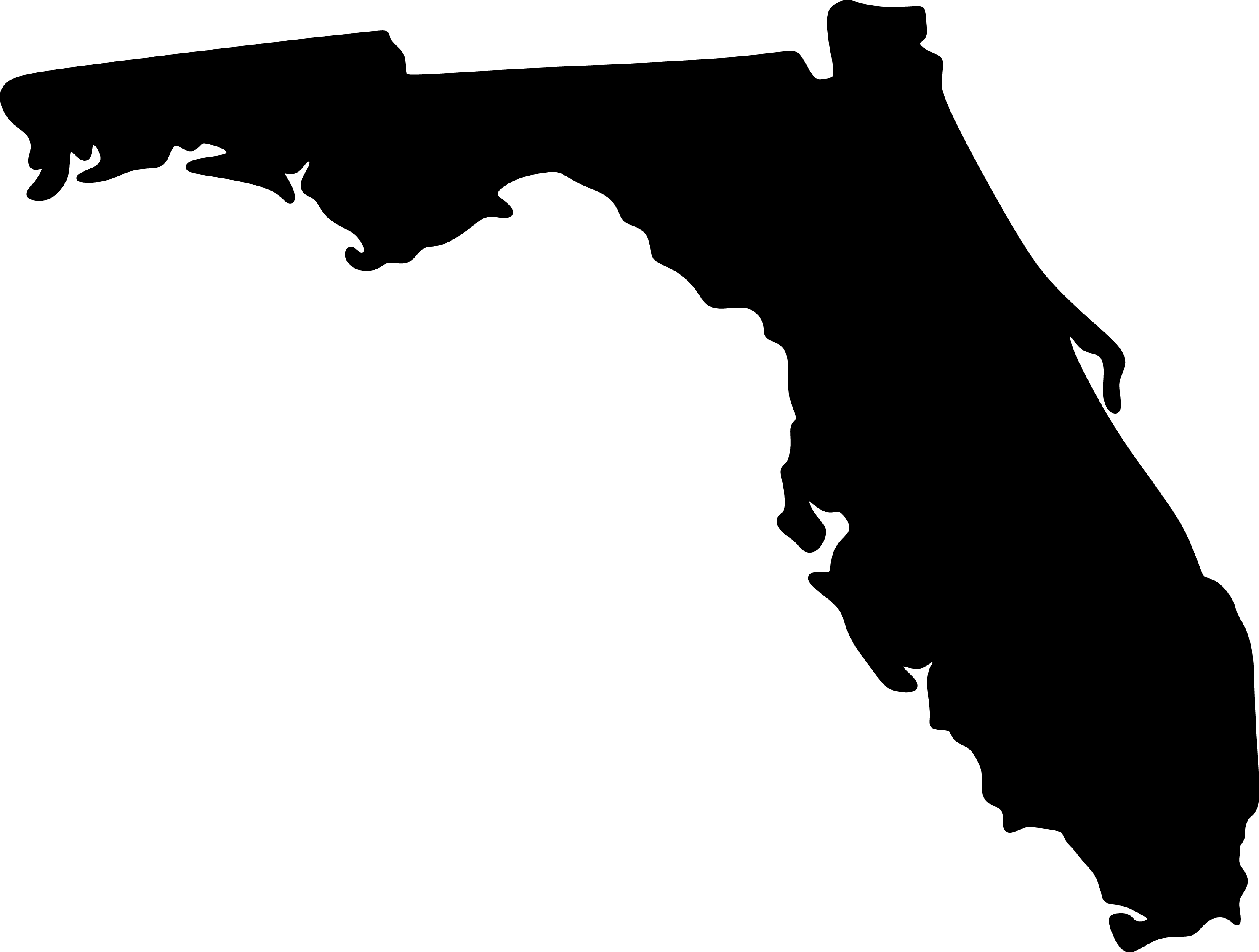
FLORIDA
- The DOD spent $8.1362 million on environmental investigations at these sites: $228,900 at Jacksonville; $12,000 at Mayport; $439,000 at Pensacola; $3,000 at Suafley Field; $392,900 at Avon Park Air Force Reserve; $1.7438 million at Cape Canaveral Air Force Station; $937, 400 at Eglin AFB; $1.073 million at Homestead AFB; $392,00 at Homestead Air Reserve Base; $790,700 at Hurlburt Field; $790,700 at MacDill AFB; $939,000 at Patrick ASFB; and $392,900 at Tyndall AFB.
- The City of Stuart estimates it will cost $16 million to install specialized filters to address PFAS-contaminated wells.
- For fiscal year 2022-2023, Florida appropriated $29 million for the testing and remediation of perfluoroalkyl or polyfluoroalkyl substances.
- Florida will receive $52.6 million from the federal infrastructure law to address emerging contaminants like PFAS in drinking water. We estimate at least half of this will be dedicated to addressing PFAS.

GEORGIA
- The DOD spent over $2.56 million on environmental investigations at these sites: $3,000 at Kings Bay; $399,800 at Air Force Plant 6; $392,900 at Dobbins Air Reserve Base; $392,900 at Moody AFB; $1,206,500 at Robins AFB; and $163,700 at Savannah International Airport.
- Georgia will receive $54 million from the federal infrastructure law to clean up drinking water supplies in communities that have been polluted by contaminants such as PFAS. We estimate at least half of this will be dedicated to addressing PFAS.
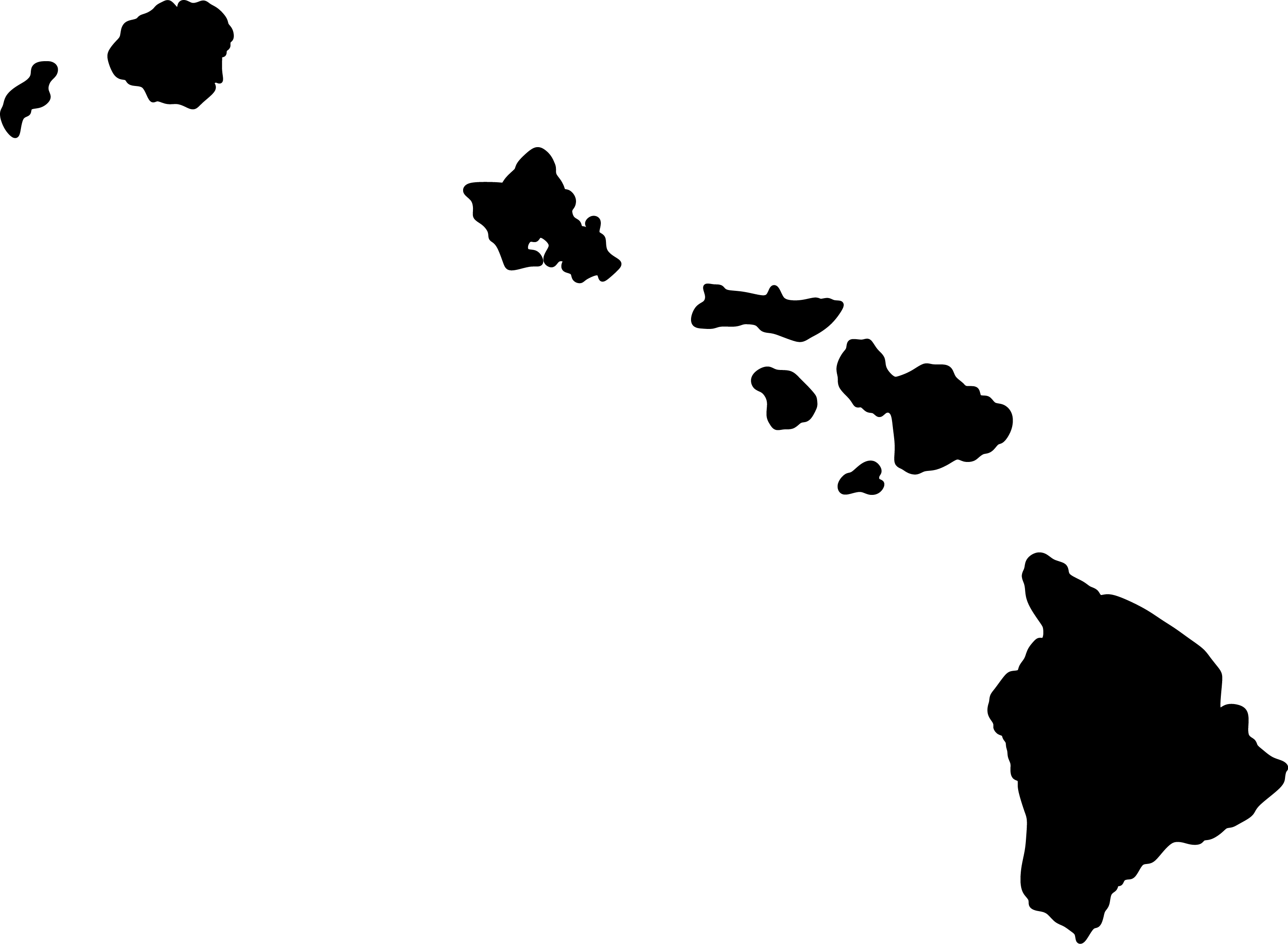
HAWAII
- The DOD spent $637,500 at Pearl Harbor and $81,400 at Bellows AFB for environmental investigations.
- Hawaii will receive nearly $19 million from the federal infrastructure law to address emerging contaminants like PFAS in drinking water. We estimate at least half of this will be dedicated to addressing PFAS.

IDAHO
- The DOD spent $155,900 at Boise and $790,700 at Mountain Home AFB for environmental investigations.
- Idaho PFAS monitoring program will spend up to $213,000 on voluntary water testing by utilities.
- Idaho will receive nearly $19 million from the federal infrastructure law to address emerging contaminants like PFAS in drinking water. We estimate at least half of this will be dedicated to addressing PFAS.

ILLINOIS
- The DOD spent over $3.8 million on environmental investigations and clean-up at these sites: $3,165,000 at Chanute AFB; $127,700 at Greater Peoria; $76,000 at O’Hare Air Reserve Station; $439,300 at Scott AFB; $7,700 at Springfield Municipal Airport; and $5,000 at Great Lakes.
- It will cost the City of Galesburg up to $7 million in construction to treat the city’s water for PFAS.
- Illinois will receive $40 million from the federal infrastructure law to address emerging contaminants like PFAS in drinking water. We estimate at least half of this will be dedicated to addressing PFAS.

INDIANA
- The DOD spent over $2 million on environmental investigations at these sites: $3,000 at Crane; $115,700 at Fort Wayne; $1,423,000 at Grissom AFB; $439,300 at Grissom Air Reserve Base; and $115,700 at Hulman.
- Indiana set aside $1.5 million to kickstart a program to address PFAS-laden firefighting foam.
- Indiana will receive $26 million from the federal infrastructure law to address emerging contaminants like PFAS in drinking water. We estimate at least half of this will be dedicated to addressing PFAS.

IOWA
- The DOD spent $175,700 at Des Moines and $115,700 at Sioux Gateway for environmental investigations.
- Iowa will receive nearly $19 million from the federal infrastructure law to address emerging contaminants like PFAS in drinking water. We estimate at least half of this will be dedicated to addressing PFAS.

KANSAS
- The DOD spent $555,000 on environmental investigations at these sites: $115,700 at Forbes Field; and $439,300 at McConnell AFB.
- Kansas will receive nearly $19 million from the federal infrastructure law to address emerging contaminants like PFAS in drinking water. We estimate at least half of this will be dedicated to addressing PFAS.

KENTUCKY
- The DOD spent $91,700 on environmental investigations at Standiford Field Air National Guard.
- Kentucky will receive $22 million from the federal infrastructure law to address emerging contaminants like PFAS in drinking water. We estimate at least half of this will be dedicated to addressing PFAS.
- The city of Lewisport approved $175,000 in funding to conduct a four-month pilot study using a reverse osmosis system to remove PFAS chemicals. They’re also looking at building a new water treatment plant at an estimated cost of $15 million.
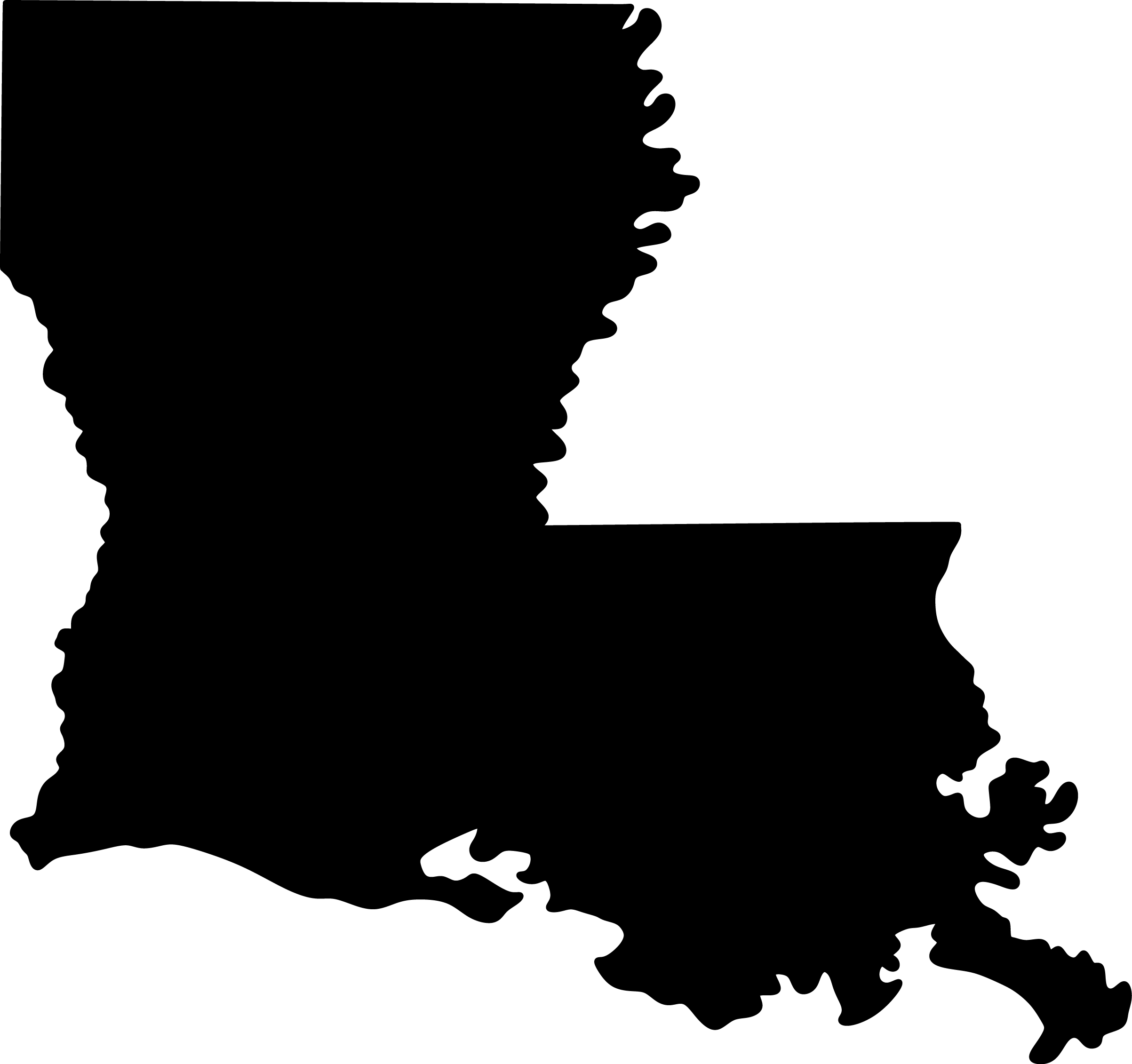
LOUISIANA
- The DOD spent over $2.2 million on environmental investigations at these sites: $790,700 at Barkdale AFB; and $1,435,000 at England AFB.
- Louisiana will receive $26.3 million from the federal infrastructure law to address emerging contaminants like PFAS in drinking water. We estimate at least half of this will be dedicated to addressing PFAS.

MAINE
- The DOD spent $3.5 million on environmental investigations at these sites: $14,300 at Cutler; $973,000 at Brunswick; $115,700 at Bangor International Airport; and $2.441 million at Loring AFB.
- The Kennebunk, Kennebunkport and Wells Water District spent approximately $1.5 million to install a water treatment system for the removal of PFAS.
- The state Department of Environmental Protection estimates that more than $200,000 has been devoted to PFAS work; Maine CDC’s Drinking Water Program estimates the program has spent $24,180 on sampling and analysis, and by the end of 2019, it’s estimated that $1,794,173 from the Drinking Water State Revolving Fund will have been used for the installation of PFAS drinking water treatment systems.
- In 2021, Maine appropriated $10 million in funding to abate, clean up and mitigate threats or hazards posed by PFAS; $188,000 to fund a program to work directly with affected farmers on PFAS mitigation efforts; $3 million to establish and fund 17 positions to assist in the identification and management of PFAS; and $16.5 million to for PFAS testing, management, and treatment of drinking water.
- In 2022, Maine adopted an appropriations bill that includes $60 million to address PFAS contamination in the state.
- In 2023, Maine appropriated $115,000 to replace firefighting gear that is known to have PFAS.
- Maine will receive $19 million from the federal infrastructure law to address emerging contaminants like PFAS in drinking water. We estimate at least half of this will be dedicated to addressing PFAS.
- The Windham Raymond School District spent $60,000 on PFAS testing, and it is estimated to cost $100,000 to treat PFAS at Raymond Elementary School, $150,000 at Line Elementary School, $16 million at the Sanford Water District, and $70,000 at Hodgdon High School.

MARYLAND
- The DOD spent over $1.4 million on environmental investigations at these sites: $130,200 at Aberdeen Proving Ground; $9,500 at Fort Meade BRAC; $351,000 at Annapolis; $151,000 at Chesapeake Beach; $234,000 at Patuxent River; $392,900 at Joint Base Andrews; and $139,700 at Martin State.
- Maryland will receive $19 million from the federal infrastructure law to help municipalities trying to test or reduce levels of PFAS in their water supply. We estimate at least half of this will be dedicated to addressing PFAS.
- The discovery that PFAS were used at the site of the new Public Safety Training Center in Westminster is forcing site plan modifications for stormwater management that will cost the county an additional $166,600.

MASSACHUSETTS
- The DOD spent nearly $3.8 million on environmental investigations and clean-up at these sites: $126,800 at Devens; $64,100 at Sudbury; $1 million at S. Weymouth; $91,700 at Barnes Municipal; $468,000 at Hanscom AFB; $1,623,100 at Joint Base Cape Cod; and $392,900 at Westover Air Reserve Base.
- Barnstable County paid $2.95 million for cleanup of contaminated wells in the Town of Barnstable.
- In June 2018, the City of Westfield approved a $13 million bond to address contaminated water.
- The Town of Wayland estimates it will cost $250,000 to start a short-term fix to address PFAS contamination in its drinking water.
- Massachusetts set aside more than $28 million to help communities test for PFAS and improve their water systems.
- The Town of Natick is planning to spend at least $3 million on a carbon filtration system to address PFAS contamination.
- The Town of Cohasset will spend an estimated $3.6 million to install a filtration system that will rid the town’s water supply of PFAS.
- The Town of Barnstable has so far invested $22 million for the filtration systems needed to address PFAS contamination.
- The City of Attleboro plans to spend over $10 million to address issues at the Wading River Water Treatment Plant in Mansfield which does not meet the state’s standard on PFAS in water.
- The Town of Chatham approved $1.4 million for the engineering and design of a new water treatment facility to deal with PFAS contamination.
- Massachusetts will receive $38 million from the federal infrastructure law to address emerging contaminants like PFAS in drinking water. We estimate at least half of this will be dedicated to addressing PFAS.
- The Town of Wellesley approved a $1.5 million interim solution to address PFAS chemicals in the town’s drinking water.
- Massachusetts received $100 million in federal covid relief funds. Of this amount, $21.3 million will be used to fund projects to remediate PFAS substances.
- Barnstable County will spend $622,000 to pay for ongoing PFAS cleanup work at the former fire training site in Hyannis.
- The Barnstable Fire District Water Department will spend $20 million to build a treatment plant to remove PFAS from drinking water.
- The total project cost to install a PFAS water filtration system at Swift River School is $244,955.

MICHIGAN
- The DOD spent over $3 million on environmental investigations at these sites: $131,900 at Alpena; $58,200 at Calumet Air Force Station; roughly $2.4 million at KI Sawyer AFB; $307,700 at Selfridge; and $163,700 at EK Kellogg.
- The U.S. Air Force spent $13.5 million at Wurtsmith AFB for environmental investigations and clean-up.
- Kalamazoo County spent $1,042,628 on costs associated with addressing PFAS contamination.
- The state of Michigan is spending $23.2 million for costs associated with PFAS contamination, including testing, monitoring and technical assistance at more than a dozen sites across Michigan.
- Michigan set aside $6 million for PFAS drinking water testing.
- The Michigan Department of Environmental Quality spent $500,000 as of January 2018 investigating PFAS contamination.
- It will cost over $229,000 to connect East Bay Township residents who have been affected by PFAS-contaminated groundwater to the municipal water system.
- The City of Stanton will spend approximately $44,600 to address the traces of PFAS found in an abandoned landfill north of Central Montcalm High School.
- Officials in Ann Harbor spent at least $1 million in 2018 to filter PFAS from its drinking water.
- Officials in Plainfield Township estimate it will cost $62 million for new water lines to reach a 25-square-mile contaminated zone in northern Kent County.
- Grayling Township in northern Michigan spent $15,000 on initial steps to develop its own municipal water system in response to PFAS contamination.
- Oscoda Township estimates spending $10 million to run water lines to everyone affected by the contamination at the former Wurtsmith Air Force Base.
- In Ionia, the city spent $476,763 to address PFAS contamination in residual biosolids.
- Lapeer has paid $750,000 as it attempts to rid its wastewater system of PFAS. Officials estimate they’ll spend $2 million to fully resolve it.
- It cost $45,000 to clean up a PFAS spill at Pellston Regional Airport.
- Cleaning up PCB and PFAS contamination in the Allied Paper Landfill is estimated to cost $69 million.
- The Kalamazoo City Commission approved spending $170,423 for PFAS testing following a spill of firefighting foam at the Kalamazoo/Battle Creek International Airport.
- Cascade Township will spend up to $13.2 million to connect to the municipal water system of Grand Rapids after their well water had been contaminated by PFAS.
- Rockford will receive a $4.5 million state grant to extend municipal drinking water to homes affected by PFAS contamination in their private wells in Algoma Township.
- For the fiscal year 2021-2022, the state of Michigan appropriated $14.45 million for PFAS remediation and $20 million for PFAS and environmental contamination response.
- In 2021, Michigan allocated $23.4 million to implement PFAS activities such as investigations and water sampling.
- Michigan will receive $37 million from the federal infrastructure law to address emerging contaminants like PFAS in drinking water. We estimate at least half of this will be dedicated to addressing PFAS.
- Appropriations bill. Provides $39 million to address PFAS and emerging contaminants.
- The City of Manistee will pay more than $100,000 to continue investigating PFAS at the city’s former landfill site on Adamczak Road.
- The City of Kalamazoo proposed a $51 million plan to filter PFAS.

MINNESOTA
- The DOD spent over $270,000 on environmental investigations at these sites: $131,900 at Duluth International Airport; $69,900 at Minneapolis-St. Paul Air Reserve Station; and $69,800 at Minneapolis-St. Paul International Airport.
- The Minnesota Pollution Control Agency will spend $100,000 to investigate an underground fire that burned for several months at one of the landfills with a high PFAS reading.
- In 2021, Minnesota adopted an omnibus bill that includes $600,000 in funding to reduce sources of PFAS upstream of wastewater treatment facilities; approximately $1.4 million in funding to develop strategies to manage PFAS in land-applied biosolids; and $250,000 in funding to demonstrate new technology for protecting drinking water from PFAS
- Minnesota appropriated $25 million to address public water treatment systems contaminated with PFAS.
- Minnesota appropriated $2 million for a grant to St. Louis County to help protect Lake Superior and other waters in the Great Lakes watershed from PFAS contamination from landfills.
- Minnesota appropriated $4 million to identify sources of PFAS contamination and to develop pollution prevention.
- Minnesota appropriated $478,000 to the University of Minnesota to develop methods for the detection, sequestration, and degradation of PFAS in Minnesota’s lakes and rivers.
- Minnesota appropriated $189,000 to the University of Minnesota to identify, develop, and field-test various types of waste wood chips and fungi to sequester and degrade PFAS leachate from contaminated waste sites.
- Minnesota will receive $28 million from the federal infrastructure law to address emerging contaminants like PFAS in drinking water. We estimate at least half of this will be dedicated to addressing PFAS.

MISSISSIPPI
- The DOD spent over $3 million on environmental investigations at these sites: $150,700 at Gulfport; $925,000 at Meridian; $790,700 at Columbus AFB; $163,700 at Gulfport Biloxi; $119,900 at Jackson; $143,900 at Keyfield; and $790,700 at Keesler AFB.
- Mississippi will receive nearly $21 million from the federal infrastructure law to address emerging contaminants like PFAS in drinking water. We estimate at least half of this will be dedicated to addressing PFAS.

MISSOURI
- The DOD spent over $1.9 million on environmental investigations at these sites: $55,700 at Lambert St. Louis; $439,300 at Whiteman AFB; $1,307,000 at Richards-Gebaur AFB; and $103,700 at Rosecrans Memorial.
- Missouri will receive over $24 million from the federal infrastructure law to address emerging contaminants like PFAS in drinking water. We estimate at least half of this will be dedicated to addressing PFAS.

MONTANA
- The DOD spent $103,700 at Great Falls Airport and $439,300 at Malmstrom AFB for environmental investigations.
- Montana will receive nearly $19 million from the federal infrastructure law to address emerging contaminants like PFAS in drinking water. We estimate at least half of this will be dedicated to addressing PFAS.

NEBRASKA
- The DOD spent $439,300 on environmental investigations at Offutt AFB.
- Nebraska will receive nearly $19 million from the federal infrastructure law to address emerging contaminants like PFAS in drinking water. We estimate at least half of this will be dedicated to addressing PFAS.

NEVADA
- The DOD spent nearly $1.7 million on environmental investigations at these sites: $211,800 at Fallon; $674,700 at Creech AFB; $667,700 at Nellis AFB; and $139,700 at Reno Tahoe.
- Nevada will receive nearly $19 million from the federal infrastructure law to address emerging contaminants like PFAS in drinking water. We estimate at least half of this will be dedicated to addressing PFAS.

NEW HAMPSHIRE
- The DOD spent over $16.5 million on environmental investigations and clean-up at these sites: $8,900 at New Boston AF Station; $67,700 at Pease; and $16,500,000 at Pease AFB.
- New Hampshire appropriated $6 million to test for PFAS contamination.
- Portsmouth is estimated to pay $3.19 million to clean up PFAS contamination at the Coakley Landfill.
- Portsmouth will have to pay $107,102 to extend a waterline near the PFAS-contaminated Coakley Landfill.
- New Hampshire created a $50 million loan fund to cover the testing and treatment required under the state’s new PFAS drinking water standards.
- The Merrimack Village District will spend $14.5 million to filter four public wells — a project that will increase user rates by nearly 80 percent.
- The Air Force spent $17 million to develop the Pease Water Treatment Facility in Portsmouth. The facility removes PFAS from Haven Well, which the city closed when it learned about the contamination.
- The City of Dover approved a $13.9 million water treatment facility with the capability to treat PFAS contaminants.
- New Hampshire will receive nearly $19 million from the federal infrastructure law to address emerging contaminants like PFAS in drinking water. We estimate at least half of this will be dedicated to addressing PFAS.
- The New Hampshire Department of Environmental Services was approved for $5 million in grant funding to implement and administer a rebate program for the removal of PFAS in private wells.
- The towns of Bedford and Merrimack will establish their own municipal rebate programs related to PFAS remediation in private wells. The program was approved for a $20 million grant and legislature funding.

NEW JERSEY
- The DOD spent $3.1 million on environmental investigations and clean-up at these sites: $845,000 at Earle; $338,000 at Trenton; $115,700 at Atlantic City; and $1,805,100 at Joint Base McGuire-Dix-Lakehurst.
- The borough of National Park estimates it will cost more than $1.6 million to remove pollutants from its water supply.
- New Jersey received $168.9 million from the 2021 federal infrastructure bill to clean up drinking water contamination and improve the state’s water infrastructure. We estimate at least half of this will be dedicated to addressing PFAS.
- It would cost the City of Garfield $2 million for new filtering equipment after PFAS was discovered in the city’s water system.
- Ridgewood spent at least $3.5 million in 2019 to install carbon filters to deal with elevated levels.
- New Jersey will receive $66 million from the federal infrastructure law to address emerging contaminants like PFAS in drinking water. We estimate at least half of this will be dedicated to addressing PFAS.

NEW MEXICO
- The DOD spent over $2.2 million on environmental investigations at these sites: $790,700 at Cannon AFB; $790,700 at Holloman AFB; and $667,700 at Kirtland AFB.
- New Mexico estimated 2020 and 2021 drinking water sampling efforts totaled $1.2 million, and the state legislature has authorized $4 million for communities in two counties to plan, design, and construct improvements to water systems with PFAS contamination.
- New Mexico will receive nearly $19 million from the federal infrastructure law to address PFAS in drinking water. We estimate at least half of this will be dedicated to addressing PFAS.
- The state has spent an estimated $8 million to $10 million on technical, legal costs and clean-up at Cannon and Holloman Air Force Base.

NEW YORK
- New York committed up to $10 million to install hundreds of private well filtration systems in Hoosick Falls.
- The DOD spent over $4.8 million on environmental investigations at these sites: $623,000 at Fort Drum; $238,000 at Seneca Army Ammunition Plant; $374,000 at Calverton; $392,900 at Air Force Research Laboratory Rome; $199,700 at Francis S. Gabreski; $2 million at Griffiss AFB; $151,700 at Hancock Field; $399,800 at Niagara Falls Air Reserve Station; $60,000 at Roslyn Air National Guard Station; $223,700 at Schenectady Airport; and $163,700 at Stewart International Airport.
- The U.S. Air Force spent $2.3 million on environmental investigations and clean-up at Plattsburgh International Airport.
- The City of Newburgh has spent over $50 million on an emergency project to clean up drinking water. Ongoing weekly water testing is estimated at $1200/week.
- Attorney General Barbara D. Underwood and Governor Andrew M. Cuomo announced a lawsuit against 3M and five other companies to recoup at least $38 million in costs incurred by the State in cleaning up environmental contamination caused by PFAS chemicals.
- New York awarded $27 million to help Long Island communities upgrade drinking water treatment systems and address the emerging contaminants PFOA, PFOS, and 1,4-dioxane.
- The Village of Endicott received $30,000 from the state for an emerging contaminants water system study.
- The Town of Oyster Bay has paid more than $50 million for a portion of the public water treatments and a seven-acre soil cleanup.
- New York spent $6 million to conduct a PFAS costs analysis, leading to a new model that estimates it will take $585 million to clean up the Grumman plume.
- The U.S. Navy says it has spent more than $130 million in total for some of the public treatments of contamination from the Grumman plume.
- An engineering report for the Oakridge Water District Improvements PFAS Treatment project estimated capital costs to be $1.93 million.
- New Windsor received $3.6 million in state funds as reimbursement for the drinking water it has been forced to buy from New York City after the chemical PFAS contaminated its new wells.
- The City of Great Neck will use a $13.8 million loan from the EPA to help finance critical upgrades to Great Neck’s water treatment facility to mitigate challenges with chemicals like 1,4-dioxane and PFAS.
- Attorney General James is actively litigating lawsuits against 3M and other makers of PFAS-containing firefighting foam products. The lawsuit seeks to recover at least $51 million in costs incurred by the state in connection with the cleanup of dangerous chemicals, the provision of alternate drinking water sources, and other actions.
- Northrop Grumman and the U.S. Navy will pay Bethpage Water District $49 million to treat groundwater contamination from the Gruuman plume.
- Long Island will receive $48.7 million in state grants to treat several contaminants, including PFOS and PFOA, in drinking water.
New York will receive nearly $84 million from the federal infrastructure law to address emerging contaminants like PFAS in drinking water. We estimate at least half of this will be dedicated to addressing PFAS.

NORTH CAROLINA
- The DOD spent $810,300 on environmental investigations: $225,000 at Camp Lejeune; $20,500 at Cherry Point; $139,700 at Charlotte Douglas; $392,900 at Seymour Johnson AFB; and $31,700 at Stanly/Badin County Airport Air National Guard Station.
- Cape Fear, NC contamination cost $1.8 million to date with an additional $650,000 for legal fees and water quality testing.
- In 2018, the North Carolina State Legislature approved a budget of $8,763,000 for clean-up and projects related to PFAS contamination.
- In the Wilmington area, the Cape Fear Public Utilities Authority is spending $46 million to filter PFAS from drinking water.
- In Cumberland County, the Board of Commissioners on Monday approved taking $10.5 million from reserves to provide public water to an area plagued by groundwater contamination.
- The Town of Pittsboro raised its enterprise fund expenditures by $2.2 million for fiscal year 2021-22 in order to address water quality concerns with PFAS.
- In 2021, North Carolina appropriated $12.75 million to the North Carolina Collaboratory to conduct PFAS analysis.
- North Carolina will receive nearly $62 million from the federal infrastructure law to address emerging contaminants like PFAS in drinking water. We estimate at least half of this will be dedicated to addressing PFAS.
- Cape Fear utility has spent $43 million to fund PFAS cleanup, and estimates it’ll need to spend an additional $3 to 5 million per year in perpetuity.
- The Orange Water and Sewer Authority estimated it would cost around $50 million to develop treatment technology to upgrade its water treatment plant and reduce the prevalence of PFAS in local water.
- The Cape Fear River Public Utility Authority spent $54 million on a PFAS filtration system.
- The Orange Water and Sewer Authority anticipates spending more than $75 million to upgrade its PFAS removal system at a new facility.
- Aqua North Carolina was awarded $9.2 million from the State Revolving Fund for fourteen separate PFAS projects.

NORTH DAKOTA
- The DOD spent over $1 million on environmental investigations at these sites: $8,900 at Cavalier AF Station; $439,300 at Grand Forks AFB; $127,700 at Hector Field; and $439,300 at Minot AFB.
- North Dakota will receive nearly $19 million from the federal infrastructure law to address emerging contaminants like PFAS in drinking water. We estimate at least half of this will be dedicated to addressing PFAS.
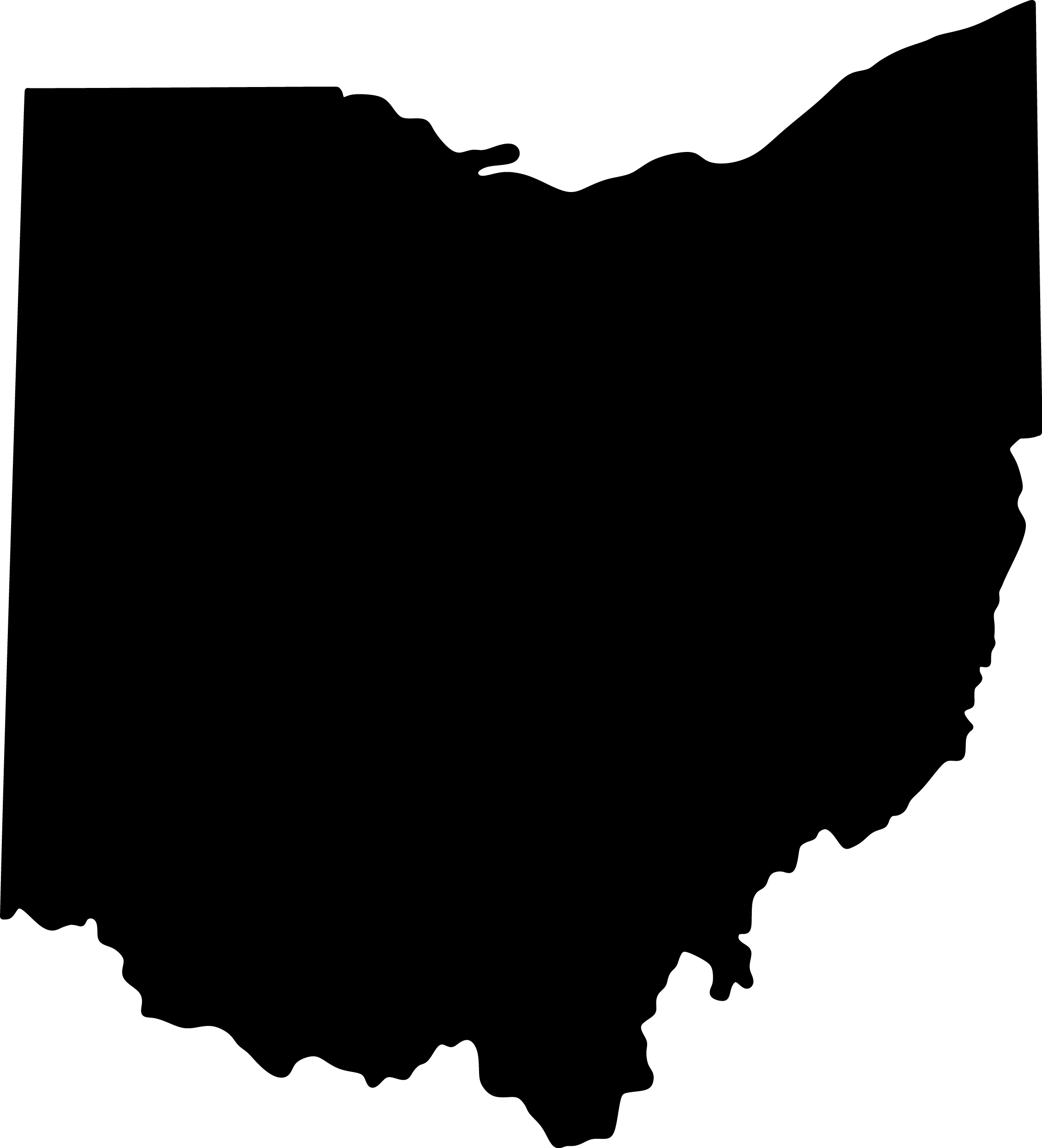
OHIO
- The DOD spent over $7.6 million on environmental investigations: $81,400 at Air Force Plant 36; $439,300 at Air Force Plant 85; $1.06 million at Gentile Air Force Station; $127,700 at Mansfield; $1.06 million at Newark AFB; $1,153,700 at Rickenbacker and Rickenbacker Air National Guard Station; $151,700 at Springfield-Beckley Municipal; $151,700 at Toledo Express; $81,400 at Youngtown Air Reserve Station; and $3.3 million at Wright Patterson AFB, including clean-up.
- The City of Dayton has requested $1 million from the US Department of Defense for PFAS contamination studies and testing associated with firefighting foam use at Wright-Patterson Airforce Base.
- The City of Dayton is spending $350,000 on a new testing system for PFAS.
- Ohio will receive nearly $47 million from the federal infrastructure law to address emerging contaminants like PFAS in drinking water. We estimate at least half of this will be dedicated to addressing PFAS.
- The Dayton City Commission recently approved $7.5 million to install a new water main in one of its well fields, which officials say is part of the city’s strategy to reduce PFAS chemical levels in the drinking water.

OKLAHOMA
- The DOD spent over $3.4 million on environmental investigations at these sites: $790,700 at Air Force Plant 3; $816,100 at Altus AFB; $816,100 at Tinker AFB; $91,700 at Tulsa International Airport; $790,700 at Vance AFB; and $115,700 at Will Rogers International Airport.
- Oklahoma will receive nearly $21 million from the federal infrastructure law to address emerging contaminants like PFAS in drinking water. We estimate at least half of this will be dedicated to addressing PFAS.

OREGON
- The DOD spent $103,700 at Klamath Falls and $115,700 at Portland International Airport for environmental investigations.
- Oregon will receive nearly $19 million from the federal infrastructure law to address emerging contaminants like PFAS in drinking water. We estimate at least half of this will be dedicated to addressing PFAS.

PENNSYLVANIA
- The U.S. Navy spent nearly $15 million at the Willow Grove military base and over $16 million at Warminster for environmental investigations and clean-up.
- The DOD spent $762,500 on environmental investigations: $234,600 at Letterkenny Army Depot; $12,900 at North Penn U.S. Army Reserve Center; $43,700 at Harrisburg International Airport; $127,700 at Horsham; $171,800 each at Pittsburgh Air Force; and $171,800 at Pittsburgh Air Force Reserve Command.
- Pennslyvania will be spending $1.6 million to fund Temple University’s study into possible links between PFAS contamination and cancer.
- Pennsylvania will receive $240 million from the federal infrastructure bill to clean up drinking water contamination and improve the state’s water infrastructure. We estimate a portion of this will be dedicated to addressing PFAS.
- Pennsylvania will receive $75 million from the federal infrastructure law to address emerging contaminants like PFAS in drinking water. We estimate at least half of this will be dedicated to addressing PFAS.
- A water utility in Warminster spent $2.5 million to install a new system to remove PFAS in the community’s water.

RHODE ISLAND
- The DOD spent $305,100 on environmental investigations: $21,000 at Davisville; $228,400 at Newport; and $55,700 at Quonset Point State Airport.
- Rhode Island will receive nearly $19 million from the federal infrastructure law to address emerging contaminants like PFAS in drinking water. We estimate at least half of this will be dedicated to addressing PFAS.

SOUTH CAROLINA
- The DOD spent over $2.2 million on environmental investigations at these sites: $392,900 at Joint Base Charleston; $223,700 at McEntire Air Guard; $1,246,000 at Myrtle Beach AFB; and $392,900 at Shaw AFB.
- South Carolina will receive $23 million from the federal infrastructure law to address emerging contaminants like PFAS in drinking water. We estimate at least half of this will be dedicated to addressing PFAS.

SOUTH DAKOTA
- The DOD spent $2,294,500 at Ellsworth on environmental investigations and clean-up and $151,700 on environmental investigations at Joe Foss Field.
- South Dakota will receive nearly $19 million from the federal infrastructure law to address emerging contaminants like PFAS in drinking water. We estimate at least half of this will be dedicated to addressing PFAS.

TENNESSEE
- The DOD spent over $1 million on environmental investigations: $15,000 at Millington, $790,700 at Arnold AFB, $127,700 at McGhee-Tyson, $55,700 at Memphis International Airport, and $55,700 at Nashville Metro.
- Tennessee will receive $26.6 million from the federal infrastructure law to address emerging contaminants like PFAS in drinking water. We estimate at least half of this will be dedicated to addressing PFAS.

TEXAS
- The DOD spent nearly $11.3 million on environmental investigations: $41,000 at Dallas Navy Base; $790,700 at Air Force Plant 4; $73,000 at Carswell AFB; $73,000 at Brooks-City Base; $1.255 million at Bergstrom AFB; $790,700 at Dyess AFB; $115,700 at Ellington Field; $2.272 million at Joint Base San Antonio; $1.946 million at Kelly AFB; $790,700 at Laughlin AFB; $1.554 million at Reese AFB; $790,700 at Goodfellow AFB; and $790,700 at Sheppard AFB.
- Texas will receive $114.6 million from the federal infrastructure law to address emerging contaminants like PFAS in drinking water. We estimate at least half of this will be dedicated to addressing PFAS.

UTAH
- The DOD spent $587,600 at Hill AFB and $71,900 at Salt Lake City for environmental investigations.
- Utah will receive nearly $19 million from the federal infrastructure law to address emerging contaminants like PFAS in drinking water. We estimate at least half of this will be dedicated to addressing PFAS.

VERMONT
- The DOD spent $107,900 on environmental investigations at Burlington.
- In 2018, the Senate Appropriations Committee approved $750,000 for the extension of public water lines to Bennington residents whose wells were found to be contaminated with PFOA. An additional $200,000 was approved for blood tests of residents who were exposed to PFOA.
- State officials estimate providing clean water to residents in Bennington, VT, will cost up to $40 million as a result of PFOA emissions from a plant owned by Saint-Gobain Performance Plastic, which made nonstick coatings. The state of Vermont and the Agency of Natural Resources have reached an agreement with Saint-Gobain to cover the majority of the costs. The state will contribute $4.7 million to the cost of the project.
- In 2022, Vermont appropriated $420,000 for the purchase of laboratory equipment to test for PFAS in drinking water to support public health testing requirements
- For fiscal year 2023, Vermont appropriated $3 million to the Department of Environmental Conservation for PFAS remediation.
- Vermont will receive nearly $19 million from the federal infrastructure law to address emerging contaminants like PFAS in drinking water. We estimate at least half of this will be dedicated to addressing PFAS.

VIRGINIA
- The DOD spent over $3.7 million on environmental investigations and clean-up at these sites: $5,000 at Fort Lee; over $2.8 million at Naval Auxiliary Landing Fentress; $44,500 at Quantico; $785,800 at Joint Base Langley-Eustis; and $67,700 at Richmond International Airport Byrd Field.
- Virginia will receive nearly $27 million from the federal infrastructure law to address emerging contaminants like PFAS in drinking water. We estimate at least half of this will be dedicated to addressing PFAS.
- Forever chemical cleanup could cost Fauquier County $44 million.

WASHINGTON
- The DOD spent over $2.2 million on environmental investigations at these sites: $20,000 at Joint Base Lewis-McChord; $790,700 at Fairchild AFB; $60,000 at Four Lakes Air National Guard Station; and $1.4 million for both investigations and cleanup at Naval Air Station Whidbey Island.
- The City of Issaquah spent $988,000 to address a groundwater well that was contaminated with PFAS. The contamination is believed to have happened when thousands of gallons of firefighting foam made with PFOS was used to douse a gasoline tanker fire on I-90 at State Route 900.
- The Town of Coupeville installed a new water filtration system costing $6 million.
- The Department of Defense paid Airway Heights $687,000 to ensure residents have drinkable water.
- Washington state correctional industries voluntary recalled 319,000 pounds of meat, poultry, baked goods and frozen meals in Airway Heights because the food was made with PFAS-contaminated water. Costs were not disclosed.
- The City of Airway Heights has spent $4 million of its own money on short-term solutions to address PFAS-contaminated wells. Annual costs total $1.3 million.
- In 2021, Washington appropriated $5,950,000 to the City of DuPont for PFAS treatment, $5,569,000 to Lakewood Water District for a PFAS Treatment Facility, and $1,150,000 for a PFAS Pilot Project by the Department of Ecology.
- The state legislature allocated more than $27 million for the cleanup of PFAS in drinking water in the state. This money is critically needed for people in communities like DuPont and Airway Heights.
- Washington will receive nearly $33 million from the federal infrastructure law to address emerging contaminants like PFAS in drinking water. We estimate at least half of this will be dedicated to addressing PFAS.
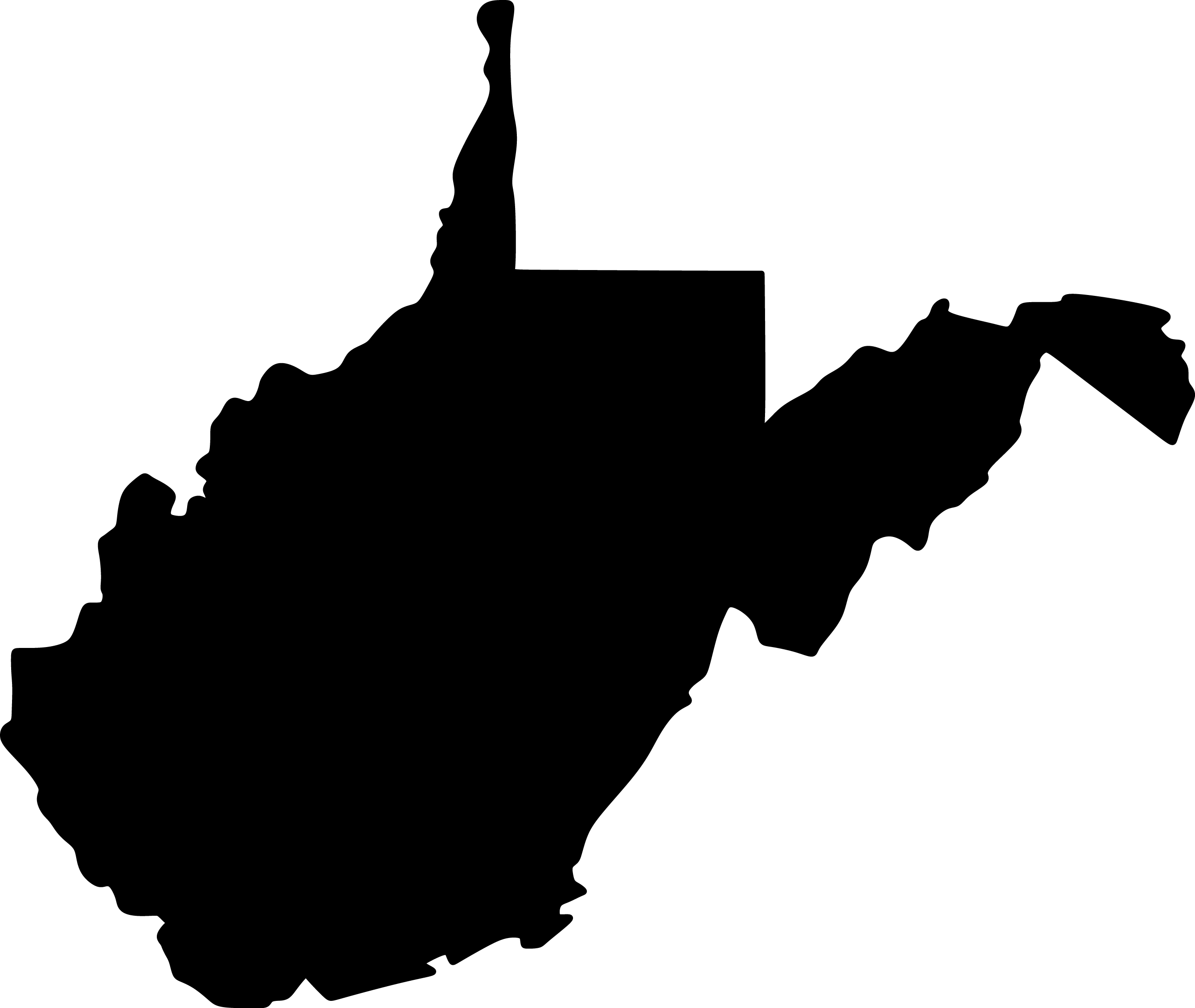
WEST VIRGINIA
- The DOD spent $231,400 on environmental investigations: $127,700 at EWVRA Shepherd Field (Martinsburg) and $103,700 at Yeager (McLaughlin).
- West Virginia will receive nearly $19 million from the federal infrastructure law to address emerging contaminants like PFAS in drinking water. We estimate at least half of this will be dedicated to addressing PFAS.

WISCONSIN
- The DOD spent over $2 million on environmental investigations at these sites: $12,000 at Fort McCoy; $1,762,000 at General Mitchell Air Reserve Station and $175,700 at General Mitchell Airport; $115,700 at Traux Field; and $107,900 at Volk Field.
- The Wisconsin Department of Natural Resources will spend $200,000 to provide bottled water to about 4,300 residents of French Island in La Crosse County due to concerns about groundwater pollution from PFAS.
- The City of La Crosse spent $25,000 to provide bottled water to nearly three dozen homeowners after PFAS was detected in their drinking water.
- The City of Madison reports it will cost an estimated $825,000 to install a filtering system to mitigate PFAS contamination at one of its wells. And each year, materials and maintenance for the system could cost the city between $50,000 to $300,000 to operate. Those estimates don’t take into account the cost of additional construction on the well needed to install the filtering system.
- The City of La Crosse approved $150,000 toward investigating the PFAS contamination at city Wells 23 & 24 near the La Crosse Regional Airport.
- State regulators expect to spend more than $500,000 a year on bottled water for French Island residents due to PFAS contamination.
- Wisconsin will receive $142 million from the federal infrastructure law to upgrade essential drinking water infrastructure and address key challenges like lead in drinking water and PFAS contamination. We estimate a portion of this will be dedicated to addressing PFAS.
- The state of Wisconsin will receive $600,000 in funding from the U.S. Environmental Protection Agency for sampling drinking water supplies for PFAS.
- The City of La Crosse will spend $25,000 on bottled water for the town of Campbell residents with PFAS-contaminated wells.
- Wisconsin will receive $25 million from the federal infrastructure law to address emerging contaminants like PFAS in drinking water. We estimate at least half of this will be dedicated to addressing PFAS.
- Wisconsin Green Fire released a report that estimates the capital cost for PFAS treatment of public water systems and other sources of water would be $208 million.
- In Eau Claire, efforts to reduce PFAS chemicals from entering the water supply and treating the existing water supply have already cost over $1 million. Additionally, plans for a future facility in Eau Claire to treat PFAS would cost $20 million.

WYOMING
- The DOD spent $127,700 at Cheyenne Municipal Airport and $586,000 at FE Warren AFB for environmental investigations.
- Wyoming will receive nearly $19 million from the federal infrastructure law to address emerging contaminants like PFAS in drinking water. We estimate at least half of this will be dedicated to addressing PFAS.



